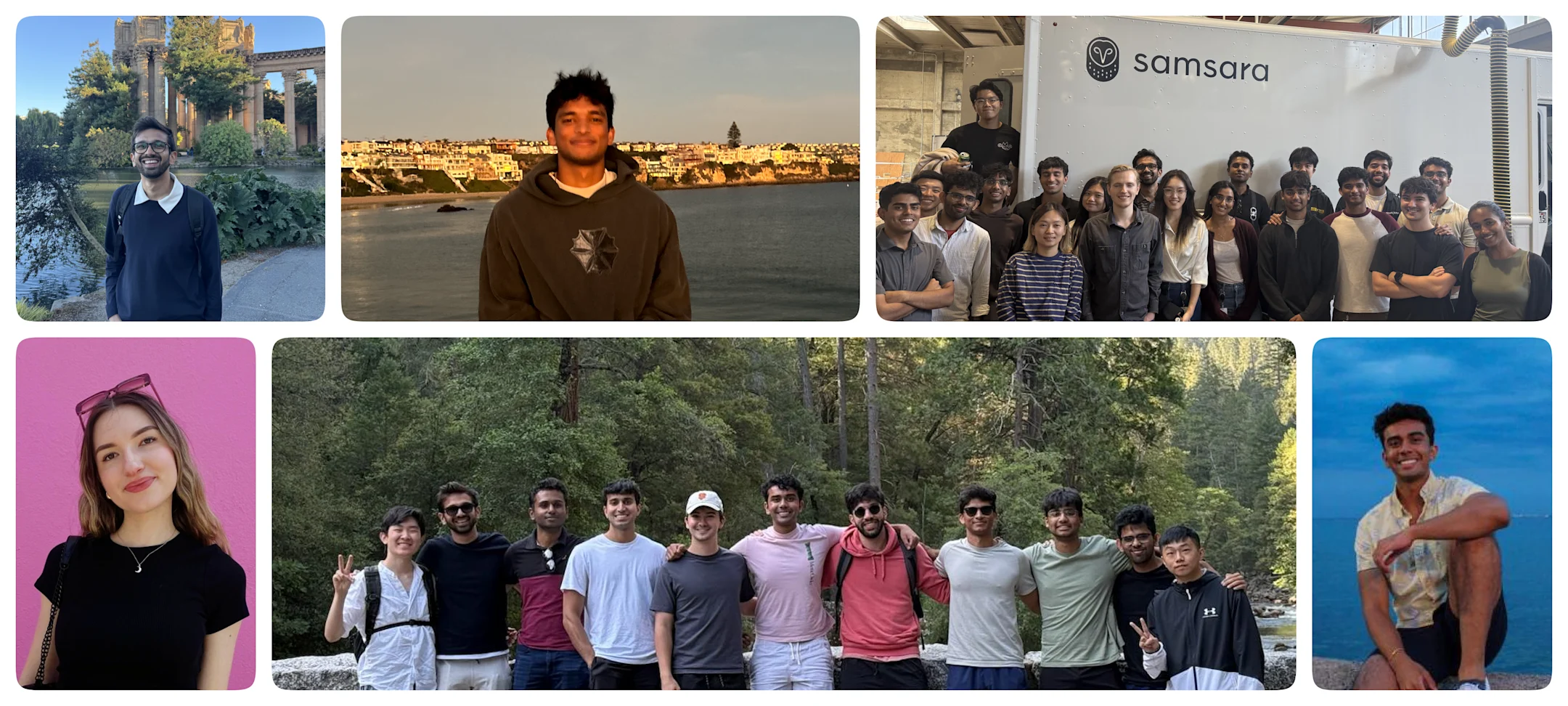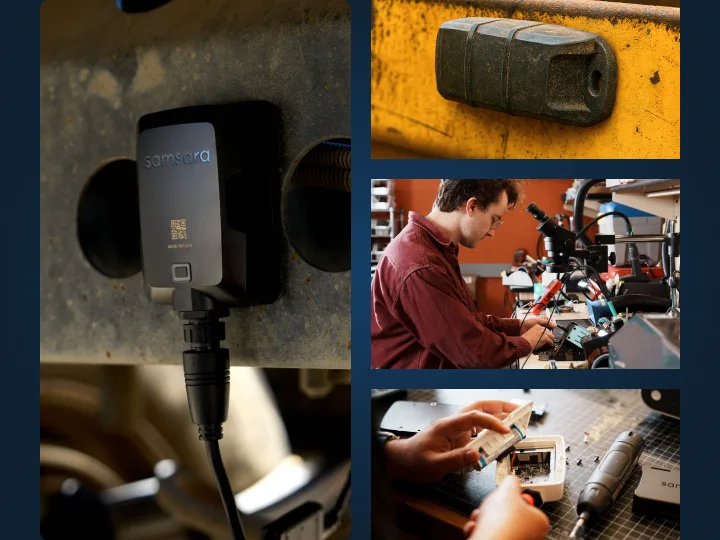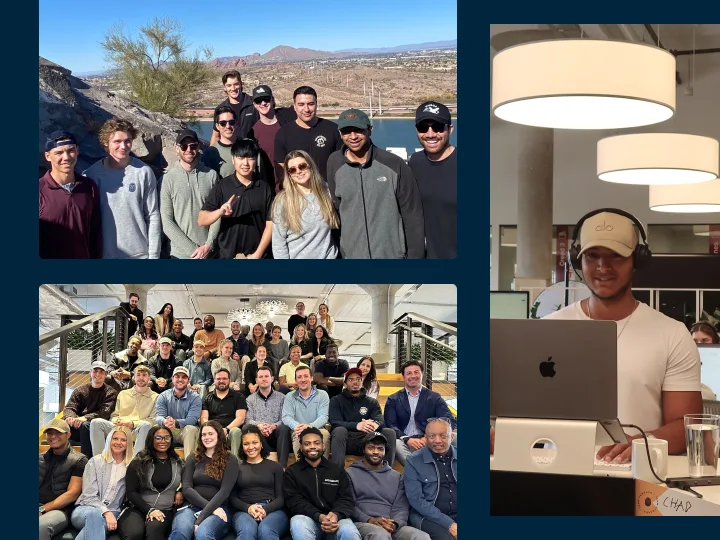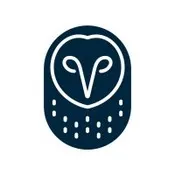Life at Samsara
From idea to impact: Solutions built and shipped by our 2025 interns
October 6, 2025
Director, Firmware Engineering

Get the latest from Samsara
Subscribe nowAt Samsara, engineering interns don’t just shadow—they build. From day one, they own projects that solve real customer problems, design with users in mind, and see their work make an impact. This summer, interns shipped real world solutions, improved frontline communication, and built infrastructure tools that made operations safer and smarter—plus pitched bold ideas in our Intern Hackathon.
Let’s take a closer look at some of the solutions our interns brought to life

Consolidating work order communication right where the work happens, reducing delays and errors
Shankar Kalidindi, University of Illinois Urbana-Champaign, Computer Science and Math
Tell us about your project this summer. What challenge did your project tackle, and how did you solve it? I worked on the Work Order Comments feature with the Maintenance team. Maintenance often requires coordination across technicians, foremen, managers, and admins, but communication relies on calls, texts, and emails in siloes—leaving no centralized record.
We built commenting directly into work orders, allowing users to add, view, and manage comments either at the work order level or tied to service tasks. This centralizes collaboration, creates a clear audit trail, and reduces miscommunication.
The feature has already rolled out, and in just four weeks, customers have logged over 600 comments, helping to streamline communication, troubleshoot issues, and track key decisions and changes—all in one place.
What was a highlight of your internship? On the technical side, winning “Best Hack” at the Intern Hackathon for our hands-free integration to Samsara Intelligence was a highlight. My contribution was building the backend for driver voice notes tied to safety events.
Non-technical highlight? A trip to Yosemite with fellow interns—hiking the Mist Trail and getting to know each other outside of work.
Making winter fleet setup faster and self-service, cutting manual work for customers and engineers
Beata Kowalewicz, Wroclaw University of Science and Technology, Applied Computer Science
Tell us about your project this summer. What challenge did your project tackle, and how did you solve it?
This summer, I worked on improving the configuration process for material spreaders—equipment used by public sector fleets during winter operations. Previously, setting up spreaders required customers to contact support or sales engineers, with firmware engineers approving each change. It was slow and not scalable.
I built a customer-facing solution that allows spreader types to be configured directly from the Samsara dashboard. Using Samsara’s internal framework, I stored configuration values at both the organization and device level and ensured automatic updates to the Vehicle Gateway. I also coordinated a safe migration of existing configurations to the new system.
What’s the real-world or customer impact of your project?
My project made it much faster and easier for customers to set up new spreaders, especially for large fleets managing thousands of these spreaders across many sites. It also eliminated the need for manual engineering intervention, saving time for support, sales, and firmware teams, while giving customers a smooth, scalable, self-service experience.
How have you grown as an engineer this summer?
A highlight was owning my project end to end: planning, making decisions, and shipping a an impactful feature used by customers. I also enjoyed collaborating across teams, learning directly from sales and firmware engineers while ensuring everything worked seamlessly.
Another discovery I made was how much I enjoy full-stack development—working on both backend and frontend parts of a project and delivering a complete solution. I realized that building customer-facing features that solve real-world problems are what I’m most passionate about, and that’s the kind of work I want to keep pursuing.
Cutting ML model testing from weeks to minutes, helping teams ship smarter features faster
Divyansh Singh, NYU, Master's in Computer Science
Tell us about your project this summer. What challenge did your project tackle, and how did you solve it? This summer at Samsara, I worked on building a Profiler for Hardware in Loop Models (PHILM). The goal? To cut through bottlenecks and give machine learning teams a faster, more reliable way to profile and evaluate Safety AI detection models on Samsara camera devices.
Before PHILM, a single model profiling run could take anywhere from two days to several weeks. I built an automated, reliable pipeline that cut profiling time down to about 30 minutes. PHILM integrates directly into our existing testing infrastructure and surfaces results and trends via dashboards—turning what used to be a black box into a transparent, developer-friendly workflow.
What’s the real-world customer impact of your project? PHILM helps teams evaluate Safety AI detection models on real hardware by surfacing performance trends and making profiling repeatable—a critical element for driver-safety and crash-avoidance applications. What once took weeks can now be done in under 30 minutes.
Since launch, PHILM has already been adopted by ML scientists and other edge ML teams, helping Samsara deliver more reliable, intelligent products faster.
What was a highlight of your internship? Collaborating with firmware, ML, and automation teams was a big highlight. That cross-functional exposure gave me a much better appreciation for different perspectives and engineering styles. I also valued the ownership I was given—from identifying workflow pain points to seeing PHILM actively used.
Outside my core project, I joined the Intern Hackathon, where our team built a prototype that connects Cursor with CI tools to help developers resolve pipeline issues faster. It was a fun, fast-paced challenge and a great reminder of what a small team can build.
Join us next summer
This summer, our interns built tools and features that made Samsara’s platform faster, smarter, and more impactful for customers around the world. If you’re interested in solving real-world problems with AI, data, and large-scale systems, we’re hiring interns for Summer 2026 now.
Check out our open Emerging Talent roles
Get the latest from Samsara
Subscribe now














